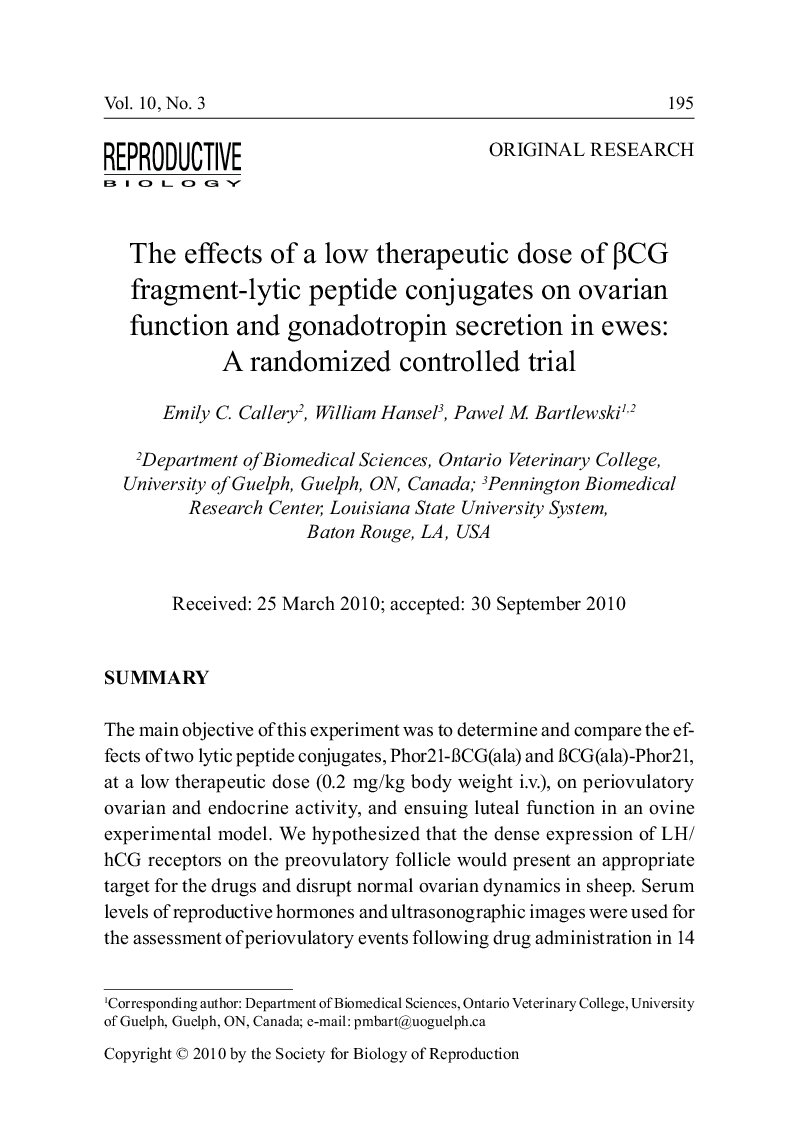| Article ID | Journal | Published Year | Pages | File Type |
|---|---|---|---|---|
| 2062789 | Reproductive Biology | 2010 | 19 Pages |
SUMMARYThe main objective of this experiment was to determine and compare the effects of two lytic peptide conjugates, Phor21–ßCG(ala) and ßCG(ala)–Phor21, at a low therapeutic dose (0.2 mg/kg body weight i.v.), on periovulatory ovarian and endocrine activity, and ensuing luteal function in an ovine experimental model. We hypothesized that the dense expression of LH/hCG receptors on the preovulatory follicle would present an appropriate target for the drugs and disrupt normal ovarian dynamics in sheep. Serum levels of reproductive hormones and ultrasonographic images were used for the assessment of periovulatory events following drug administration in 14 Rideau Arcott ewes; seven animals served as controls. Ovulations were synchronized with intravaginal progestogen–releasing sponges (medroxyprogesterone acetate, 60 mg) that were left in place for 12 days and a single i.m. injection of 750 IU of equine chorionic gonadotropin (eCG) given at sponge withdrawal. Both drugs were administered by i.v. injection 36 h post sponge removal/eCG injection, during the period of increasing LH responsiveness of potential ovulatory follicles and around the expected onset of the preovulatory surge of gonadotropins. No difference (p>0.05) was detected in the number of luteal structures per ewe in control versus treated animals during early luteogenesis. After drug administration, peak FSH concentrations were higher (p<0.05) in Phor21–ßCG(ala)–treated compared to control ewes and circulating estradiol concentrations were lower (p<0.05) in ßCG(ala)–Phor21–treated animals. Mean serum progesterone concentrations were lower (p<0.05) in ßCG(ala)–Phor21–treated than control ewes during the luteal phase post–treatment. There were no differences (p>0.05) in the percentage of ewes that lambed or lamb characteristics between the three groups at lambing 9 months post–treatment. In summary, neither Phor21–ßCG(ala) nor ßCG(ala)–Phor21 demonstrated adverse effects on the ovulatory process but the treatment with ßCG(ala)–Phor21 significantly depressed follicular and luteal steroidogenesis. With a lack of evidence for disruptive effects on endocrine function and fertility, these observations support the use of Phor21–ßCG(ala) as a cancer pharmaceutical.
